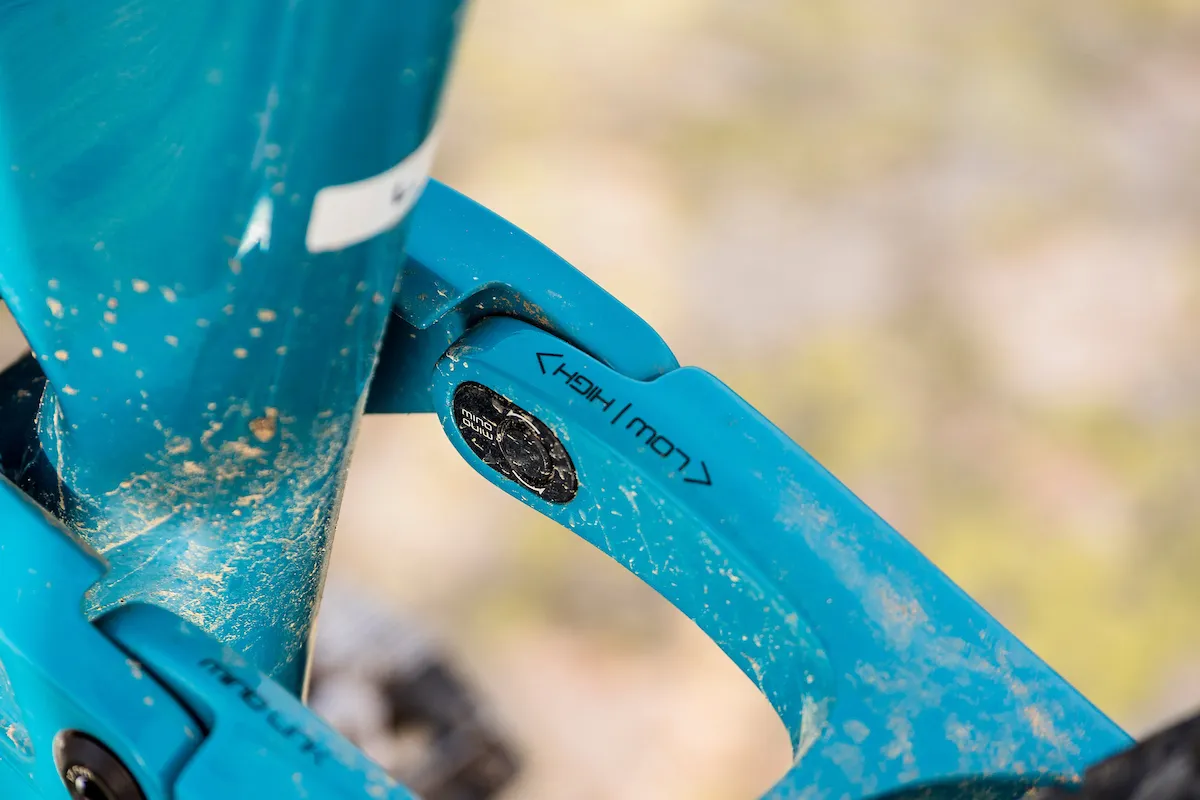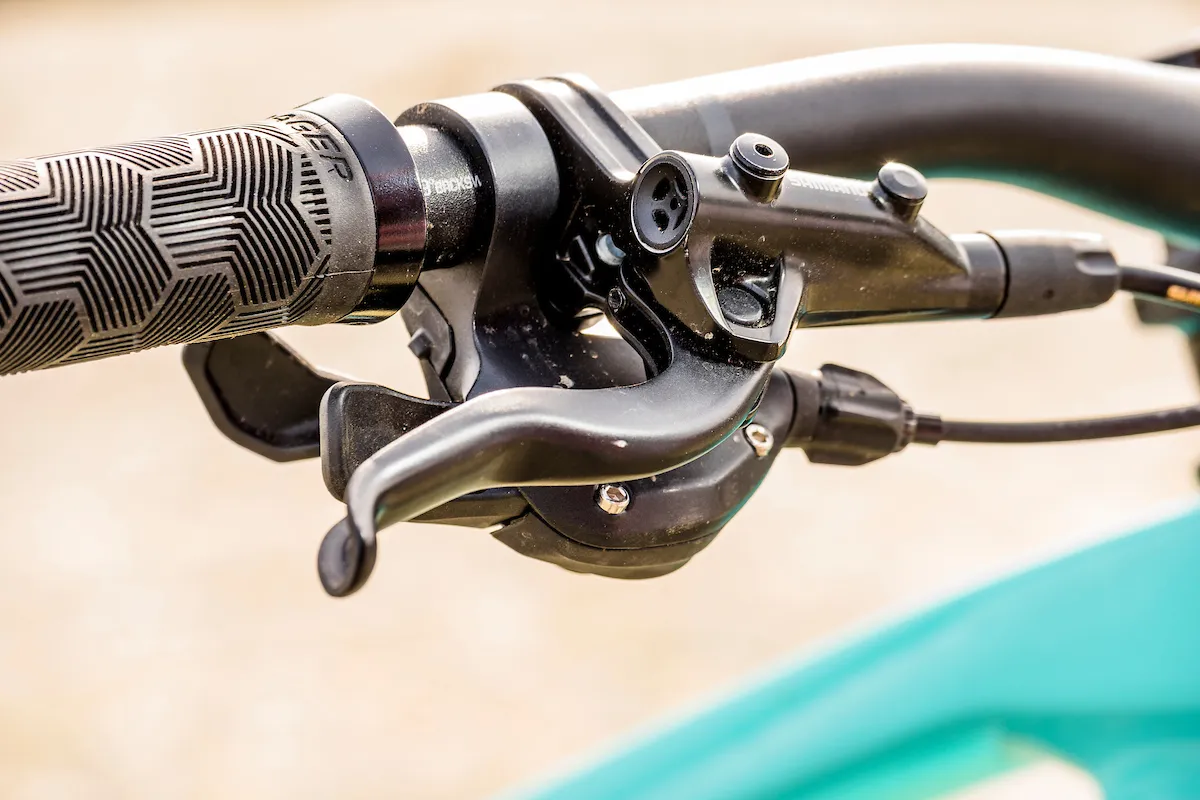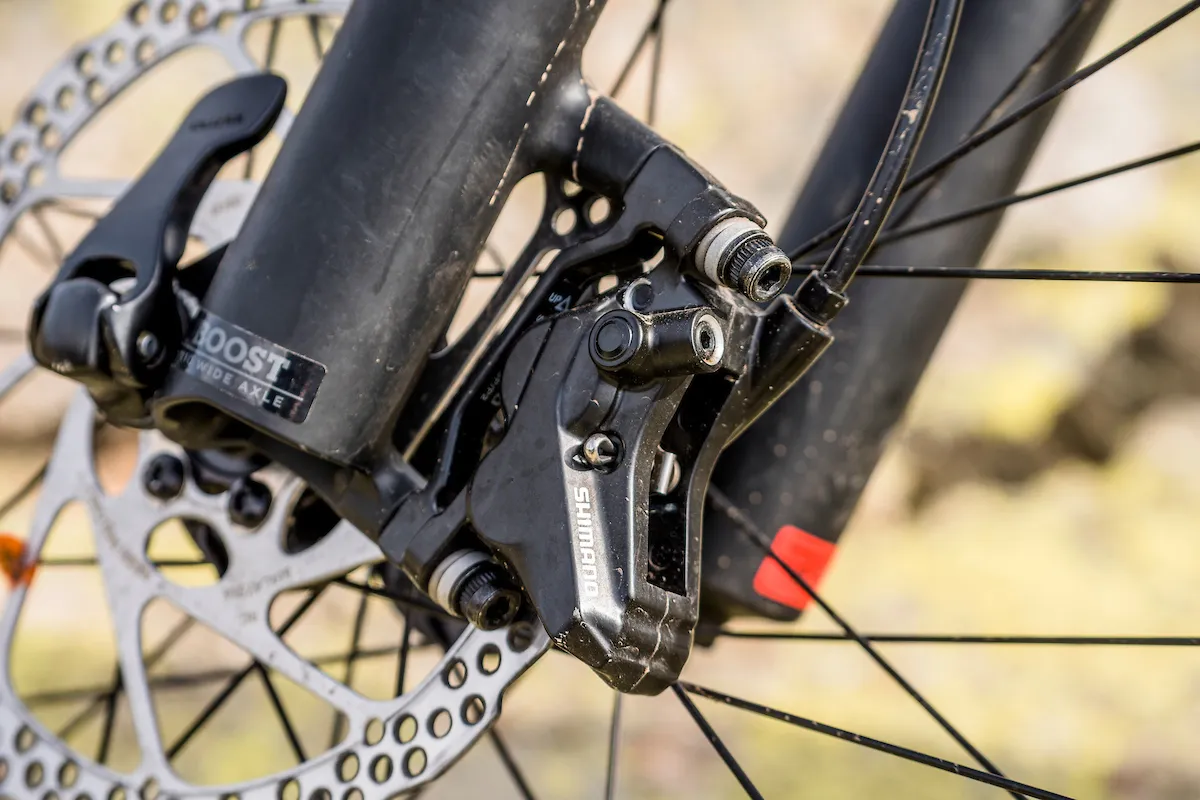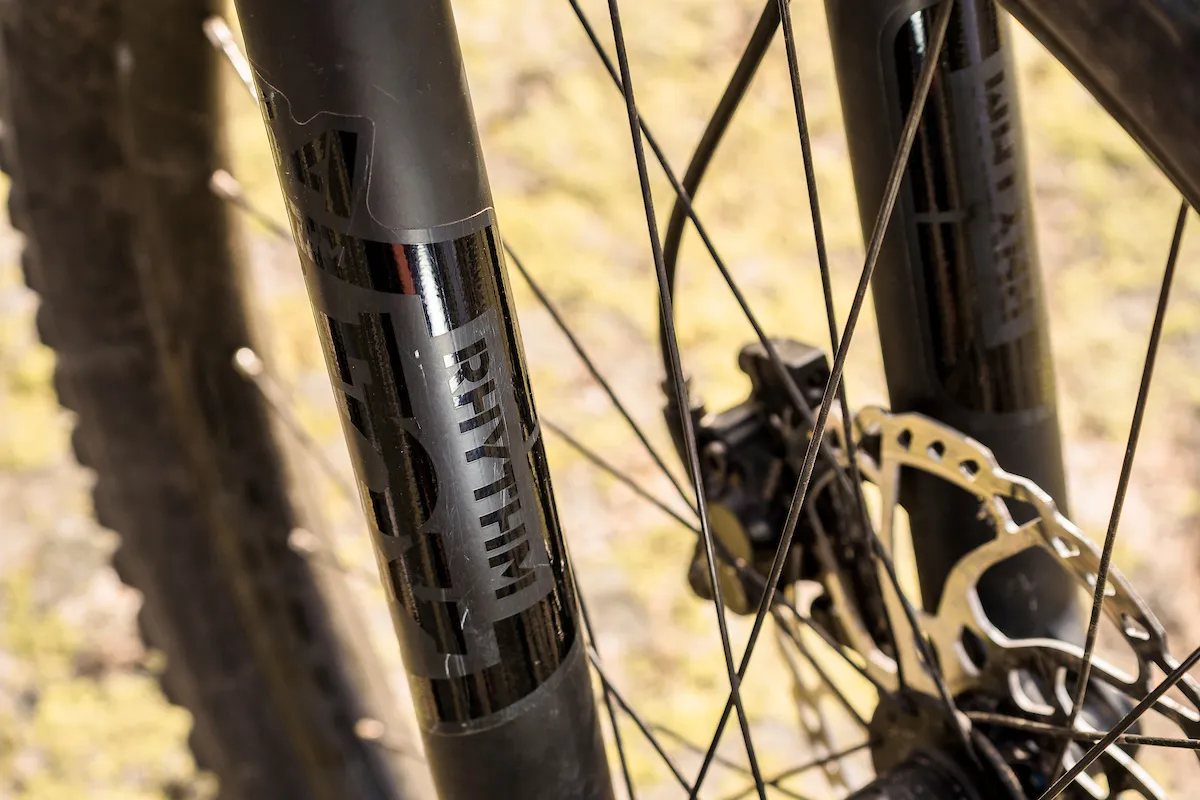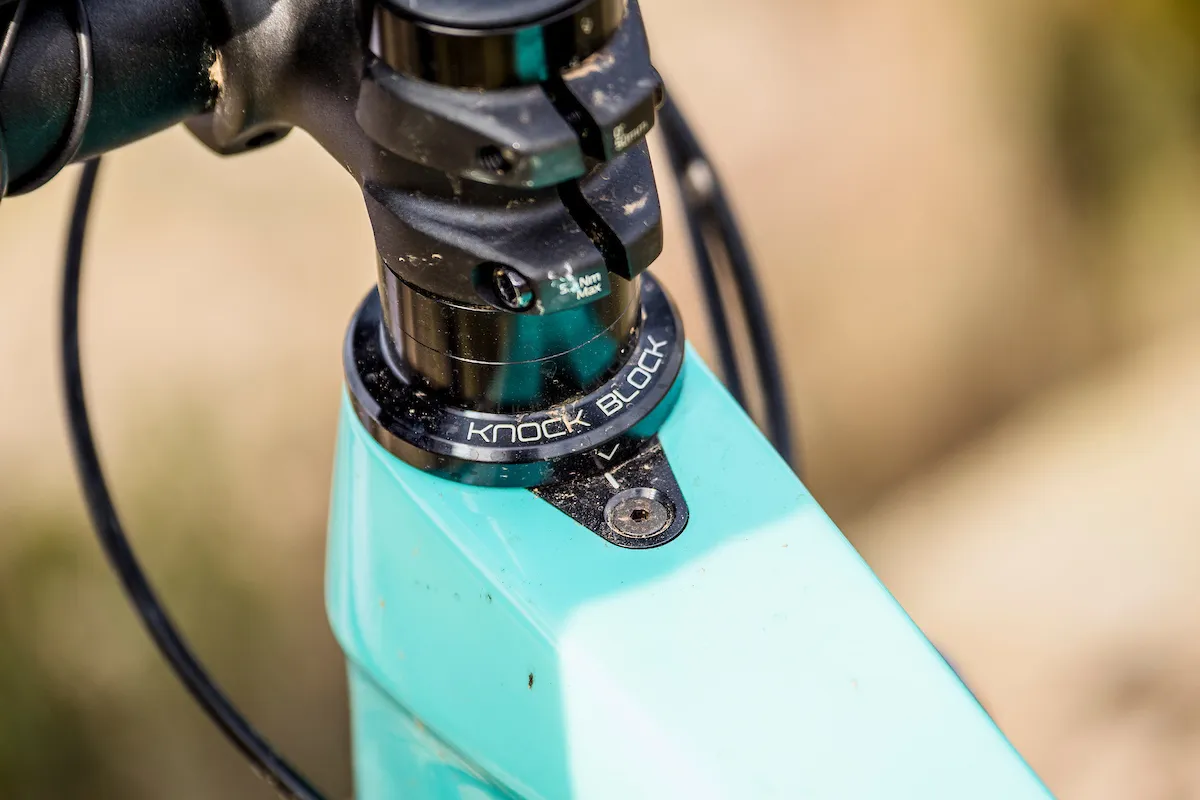The Fuel EX is Trek’s 130mm travel trail bike and uses its ABP suspension linkage and proprietary Re:aktiv suspension tune.
This 9.7 model is made from OCLV carbon, but alloy versions of the Fuel EX are also available. It’s a 29er, with high-volume 2.6in wide tyres and benefits from a 140mm fork up front.
Trek is able to draw on its in-house componentry brand Bontrager for the bulk of the kit, so it’s a little surprising that in the value stakes, the Fuel EX 9.7 doesn’t shine. However, previous generations of the bike were popular at BikeRadar, and the Fuel EX has seen an update for 2020.
Bike of the Year 2020
The Trek Fuel EX 9.7 is part of our annual Bike of the Year test.
Head to our Bike of the Year hub for the full list of winners, categories and shortlisted bikes, as well as the latest reviews – or read our behind-the-scenes feature on how we tested Bike of the Year 2020.
Trek Fuel EX 9.7 frame and suspension details
Trek has been using carbon for decades, and its OCLV Mountain Carbon is the material of choice for the Fuel EX 9.7.
Unlike many brands, the tubes are largely straight – both the top and down tube feature barely a curve. This does mean that the down tube could be prone to fork-crown strikes in a crash, were it not for the Knock Block system built in to the headset.
This is a keyed frame/spacer/stem system, which limits the rotation of the fork during a crash. The frame comes with the pre-requisite down tube protection, as well as chainstay protection. Cables are routed internally, with clamped stops.
Seen on carbon Specializeds for a while, Trek also has its own down tube storage solution, located under the bottle cage.
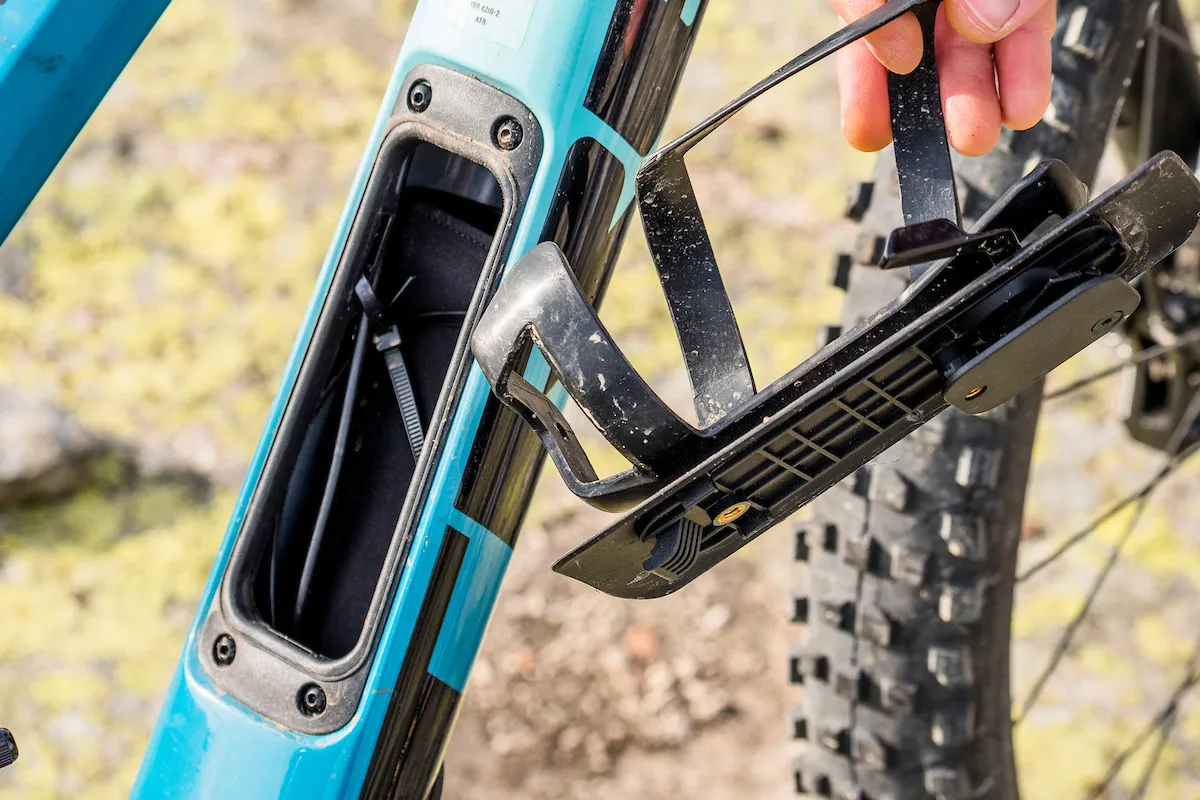
While my test bike featured 29in wheels, the XS is available with 27.5in wheels only, while the S is offered in both wheel sizes, so you can choose depending on your preferences.
Trek’s ABP (Active Braking Pivot) linkage sits somewhere between a classic linkage actuated single pivot and a four-bar linkage, with a solid chainstay and seatstay, joined by a pivot located around the rear axle.
Trek has worked with Penske suspension for a number of years, developing the Re:aktiv suspension tune for its shocks.
This reacts to the shock’s shaft speed as it moves: faster shaft speeds mean the compression circuit opens up more during impacts, while slower shaft speeds (generally generated via pedalling) lead to a more closed-off circuit for better pedalling performance.
Trek Fuel EX 9.7 geometry
This latest generation Fuel EX benefits from a tweak to its shape, with a longer geometry that looks more contemporary on paper.
Trek uses its Mino Link chip in the suspension’s rocker link to give two geometry positions : High and Low.
For the bulk of the testing (and in the geometry chart below) I kept the bike in the Low position, which is around 0.5 degrees slacker than the High position, and a margin shorter too because of how geometry adjustment chips work.
Key figures in a Large are the 470mm reach, a 66-degree head angle and a 75-degree seat angle.
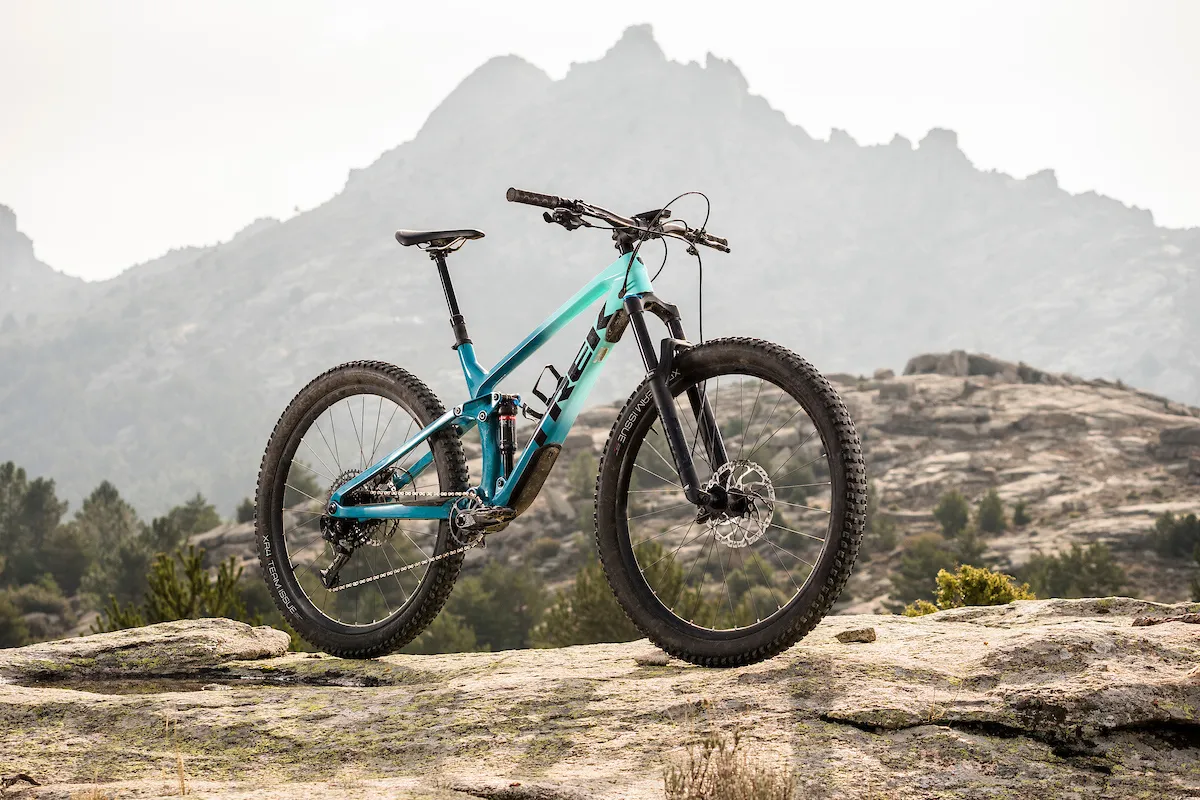
- Seat angle: 75 degrees
- Head angle: 66 degrees
- Chainstay: 43.7cm / 17.2in
- Seat tube length: 45cm / 17.72in
- Top tube (effective): 63.4cm / 24.96in
- Head tube length: 10.5cm / 4.13in
- Bottom bracket height: 33.9cm / 13.35in
- Wheelbase: 1,211mm / 47.68in
- Standover: 74.8cm / 29.45in
- Stack: 61.3cm / 24.13in
- Reach: 47cm / 18.5in
Trek Fuel EX 9.7 specifications
What’s clear from the spec list is that you’re paying for the frame with this bike.
It’s not a super glamorous specification, though none of the components are inherently poor – they all work together and give you the features you’d want from such a bike.
However, if you compared the components with some others in the Trail Bike of the Year test, you may come away a little disappointed.
If I bought the bike, I would look to swap out the brakes and the rear cassette. The brakes have a long lever that flexes and the NX level cassette is very heavy – although I'm not too worried about the 11-50t (rather than usual 10-50t) range it offers.
However, you should look beyond spec lists because how the bike rides is the most important thing.
It’s also worth noting that Trek bikes are generally sold through bike shops, which adds costs (or removes value), but comes with its own benefits. Arguably, you get better pre- and post-purchase support, as well as the ability to support local businesses on your high street.
Trek Fuel EX 9.7 ride impressions
Our 2020 Bike of the Year testing predominantly took place in the South West of the UK during winter. This included loops around trail centres, natural muddy and rooty tracks dug in to Welsh hillsides, as well as laps at BikePark Wales.
A number of bikes were taken to Spain for the final stage of testing, where we rode on dry, rocky flow trails, super-technical rock gardens and some loamy enduro tracks. Thanks to BlackTown Trails for their help finding these test tracks!
Setting up the Fuel EX 9.7 was fairly easy. The Fox shock and fork needed simple inflation and rebound setup, and the dropper worked from the off.
The only thing to bear in mind is that the larger the tyre volume, the more important tyre pressure is, and smaller changes in pressure make more noticeable differences in feel than a more ‘normal’ 2.35/2.4in tyre.

Trek Fuel EX 9.7 climbing performance
Bontrager’s XR4 tyres might have a large volume that ‘looks’ chunky, but I found them fast rolling thanks to their tread, which doesn’t protrude too far from the carcass.
This helps give the bike a little zing when pedalling on smooth surfaces, such as fire roads and tarmac.
Wider tyres generally allow slightly lower pressures, which can help on more technical climbs too, but I was limited a little on tyre pressure by the rims that could do with being a touch wider.
Over loose or muddy surfaces, the low-depth tread doesn’t have masses of bite, so I did slip out a few times on the greasier climbs. This was played out again on some technical climbs where you want a little bite from the tyre to help claw up steps and over roots.
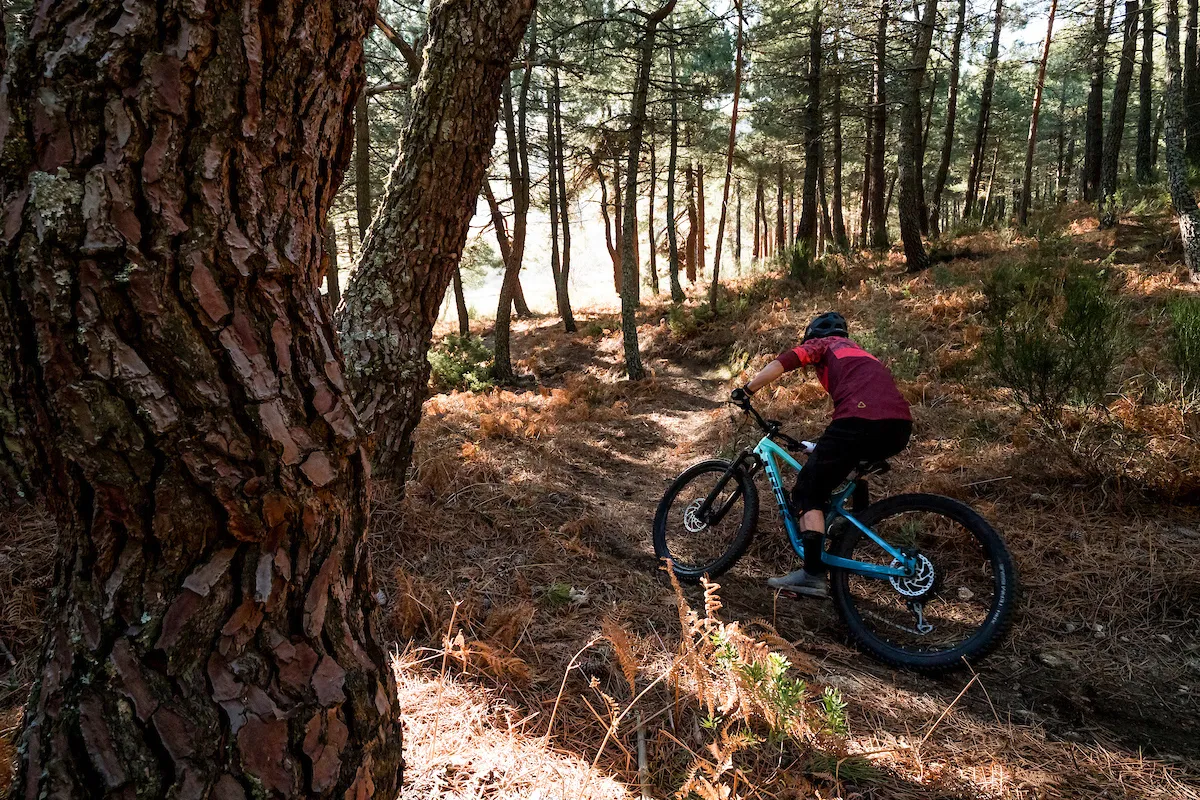
The back-end sits fairly high, helping a peppy climbing attitude that's aided by the RE:aktiv shock, which reacts to shaft velocity to give a more stable shock under pedalling loads.
This meant I rarely reached for the shock’s lockout lever. It doesn’t replace a lockout, as such, but does mean a more efficient ride a lot of the time.
While the seat tube angle isn’t the steepest out there, I felt it was steep enough to get the hips reasonably well over the cranks. With the bike sitting higher in its travel than some, and remaining propped up on steeper pitches, I didn’t find it too compromising.
The longer front-end means there’s more room to manoeuvre over the bike on technical sections, too.
Trek Fuel EX 9.7 descending performance
The 130mm of rear travel uses Trek’s ABP suspension system, with the rear pivot rotating round the axle.
The suspension has a definite element of pop and support to it, contributing to a fun ride quality that really shined on tight and twisty woodland trails, as well as when shredding round our local bike park.
More aggressive or heavier riders will want a volume spacer or two in there though, because on bigger hits I occasionally found the end of the travel fairly quickly.
Trek has dropped the full-floating shock from the previous generation that was super-smooth in feel, but this generation bike feels a little more composed and less mushy through the pedals.
That previous generation bike was one of the smoothest we’ve ridden, and fortunately this generation bike still offers buttery smoothness from the rear suspension.
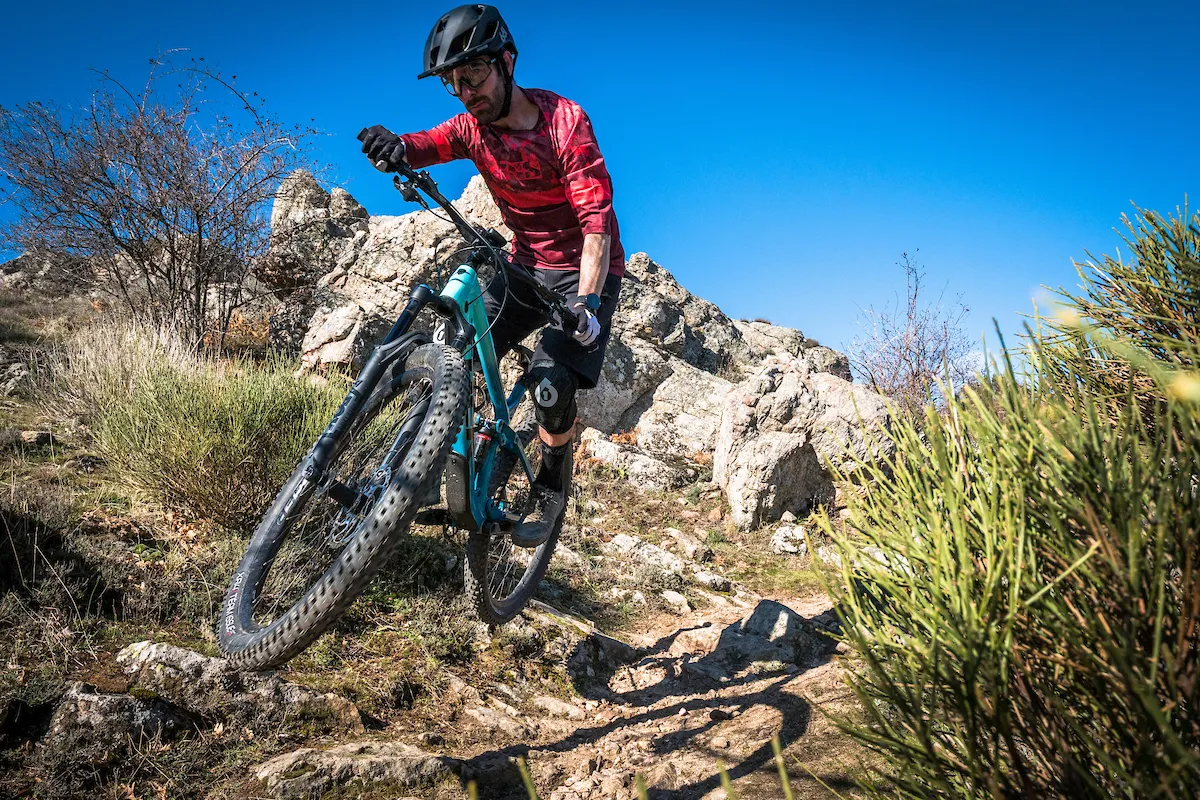
At the front, I found the smooth rear accentuated the cheaper 140mm travel Fox Rhythm 34 fork internals, which couldn’t match the rear’s sensitive feel.
Like the shock, a volume spacer would also aid the fork’s performance for larger or more aggressive riders.
Despite this, the fork still feels good for an ‘entry’-level fork; it’s fairly smooth, support could be a lot worse, and you get a compression dial on the fork leg to lock it out should you wish to on smoother climbs.
At 140mm travel, the Fox 34 chassis is at its limit in terms of structural stiffness. When riding moderately aggressive – in the bigger compressions round corners or punching through rock gardens – I could feel the fork fluttering and twisting, which is something to consider if you’re the type of rider that puts a lot of strain through forks.
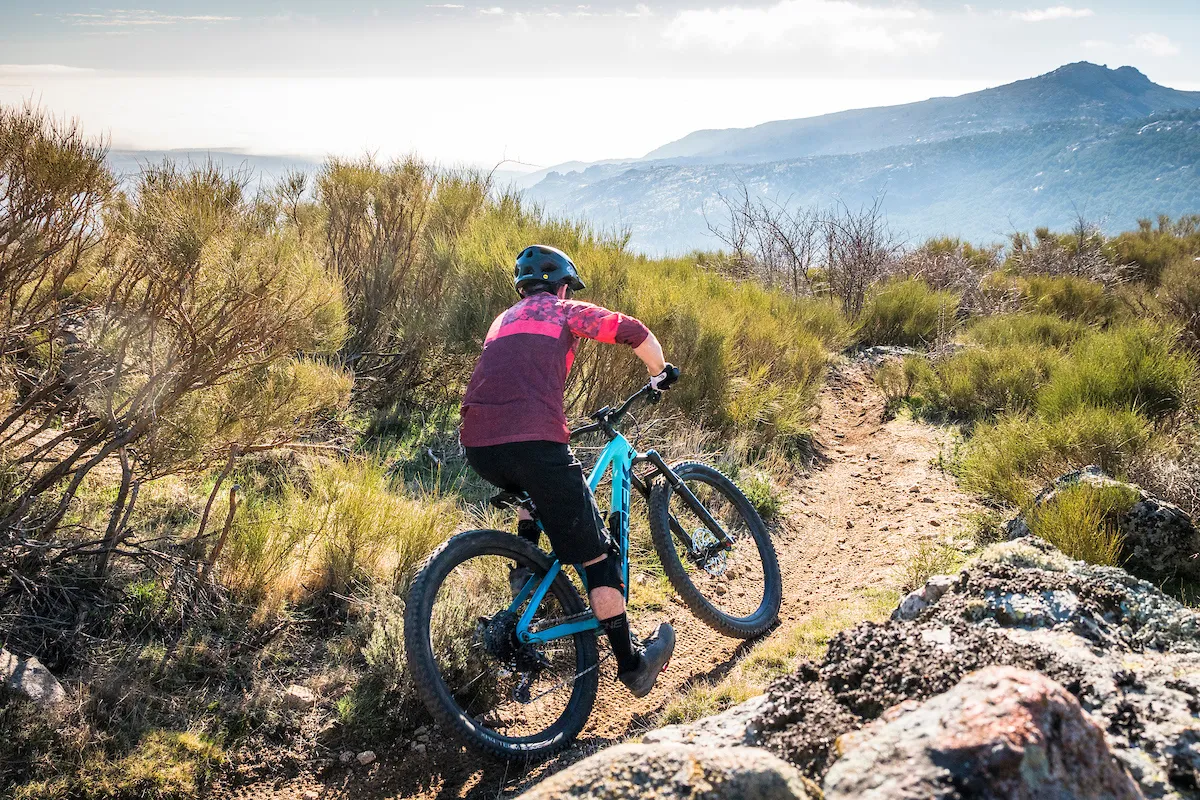
The Fuel EX loves to chop and change direction, and with the back-end encouraging more than a little air-time thanks to its support, it’s a great bike to pop and play around trail centres.
Here, the large volume Bontrager XR4 tyres roll fast, adding to the bike’s sense of speed. It’s the same story on dry, flowy natural trails too, but when conditions get sloppy, they lack bite, as I found on the climbs.
On steeper terrain, or when ploughing through rocks, I found the Line Comp 30 wheelset’s rims didn’t quite offer the support that the tyres needed, leading to either a pingy ride when pressures were increased or a little squirmy when pushed hard into a catch-berm. This added to a sense of vagueness accentuated by the fork in the worst cases.
A mixed SRAM NX/GX drivetrain shifted well during testing, but didn’t mate well on the bars with the Shimano MT420 brake levers.
They have a long lever, which flexed while hauling on the brakes, detracting from the feel of the four-piston calipers.
Trek Fuel EX 9.7 bottom line
Trek's Fuel EX always finds favour with testers, so long as it’s kept within its comfort zone. Trek hasn’t built a mini-enduro bike here – that’s clear to see with the Fox 34 fork and faster-rolling tyres – so it’s unfair to judge it based on its performance on the chunkier trails.
That said, the rear suspension is more composed than the previous generation Fuel EX and the geometry is more suited to going fast. A sturdier fork and more precise tyres could make this a mini-monster of a bike, though.
If you’re looking for a ‘proper’ trail bike, one for zipping round trail centres, popping off rocks and roots, crossing plenty of ground relatively efficiently and generally just having a laugh on, then you may well love the Fuel EX as much as I do.
This model might not be the best value, but there’s an alloy version for a few hundred quid less that looks equally tidy.
Product
| Brand | Trek |
| Price | €3899.00, £3400.00, $4100.00 |
| Weight | 14.01kg |
Features
| Fork | Rhythm 34, 140mm (5.5in) |
| Stem | Bontrager Line, 35mm diameter, 50mm |
| Chain | SRAM |
| Frame | OCLV Mountain Carbon, 130mm (5.1in) |
| Tyres | Bontrager XR4 Team Issue, 29x2.60in |
| Brakes | Shimano MT420 203/180mm rotors |
| Cranks | Truvative Descendant crank 32t |
| Saddle | Bontrager Arvada |
| Wheels | Bontrager Line Comp 30 |
| Shifter | SRAM NX Eagle |
| Cassette | SRAM NX Eagle, 11-50t |
| Seatpost | Bontrager Line Dropper, 150mm |
| Grips/tape | Bontrager XR Trail Elite |
| Handlebar | Bontrager Line, alloy, 780mm |
| Rear shock | Fox Performance Float EVOL, RE:aktiv |
| Bottom bracket | SRAM DUB |
| Available sizes | XS, S, M, L, XL |
| Rear derailleur | SRAM GX Eagle |

